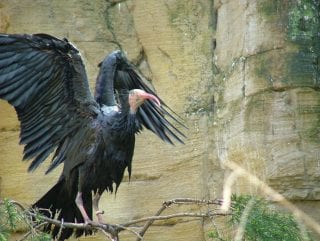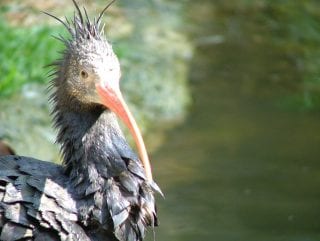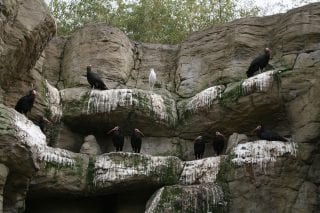Fun Facts
Wading
Despite usually living near water, and unlike most members of the Ibis family, the waldrapp ibis is a non-wading bird.
Old Man
The waldrapp ibis’ genus name Geronticus derives from the Greek for "old man", a reference to their wrinkled bald heads.
1.8 Million Years on Earth
Thanks to fossil records, we know that bald ibises have been around for at least 1.8 million years!


